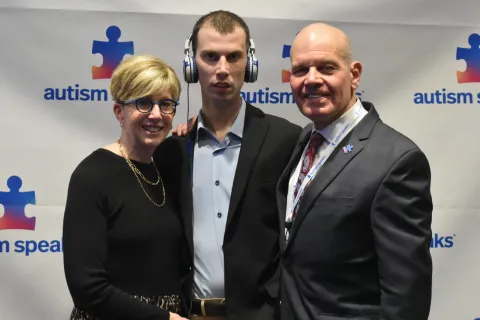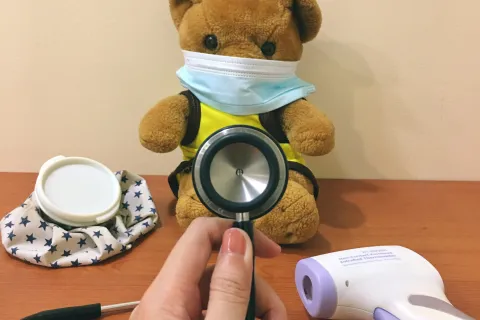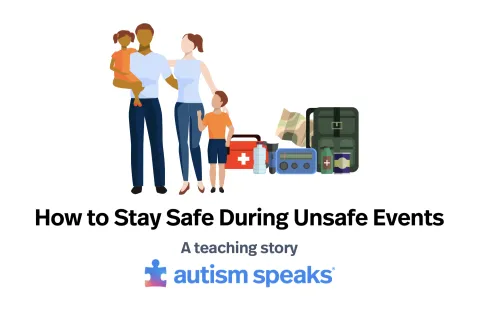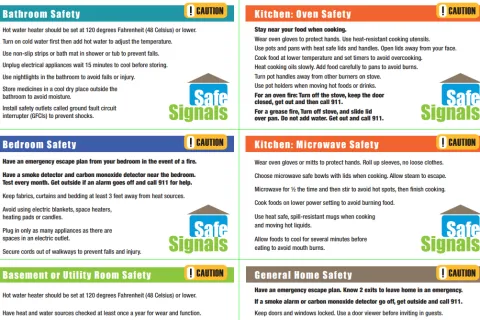Special Ed Teacher seeks advice: Child with autism bolts from safety
I’m a special education teacher in a rural community with few autism services. I’m trying to help a parent of a 3-year-old boy who has autism. She needs help teaching her son not to run blindly into the street with no thought of danger. She’s tried discipline but the message of “danger” doesn’t seem to get through. How can I help this mom and her boy?

Today’s “Got Questions?” answer is by developmental pediatrician Amanda Bennett and behavior analyst Megan Carolan Tomkinson. Dr. Bennett is the director of the Autism Speaks Autism Treatment Network (ATN) site at Children’s Hospital of Philadelphia, where Ms. Tomkinson also practices.
Difficulties with safety awareness are so common among young children. Autism – with its communication and social-awareness issues – can heighten the challenge of teaching a child safe behaviors.
In a general response to your question, we can describe some strategies that can help identify and teach safety skills. But these strategies can’t replace an individualized therapy program with a professional trained in the principles of Applied Behavior Analysis (ABA) or a related behavioral approach.

For more information, see the Autism Speaks ATN/AIR-P tool kits “An Introduction to Behavioral Health Treatments” and “A Parent’s Guide to Applied Behavior Analysis.” (Follow the links for free download.)
For personal help finding services in your area, contact the Autism Speaks Autism Response Team at 888-288-4762, en Español 888-772-9050, or familyservices@autismspeaks.org.
In communities where families simply can’t access home or community-based behavioral services, the answer may be an online, remote-learning program. Two of these providers are Behavior Frontiers and Rethink.
Strategies for at home and at school
We see why the mother swatting her son would be ineffective in this situation. By its nature, physical discipline puts the focus on what not to do. For example, “No running into the street!” Such “don’t” messages can be confusing for a child who doesn’t understand what he is expected to do.

In teaching safety skills, it’s important to focus on “what to do” while teaching the skills needed in a step-by-step manner.
In the example you describe, some of these skills might include the following:
* holding hands with the parent or other care provider
* waiting for a visual or audible signal that it’s safe to cross
* responding to one’s name
* Stopping when asked
When teaching a child “what to do,” we suggest three general strategies: visual supports, reinforcement/rewards and practice.
Visual Supports
Many children with autism have difficulty processing spoken language. In general, they seem to respond better to visual cues.
So to reinforce safety skills such as holding hands, one can use pictures of hands being held. For teaching “wait,” one might use a picture of the uplifted hand seen in a “no walk” sign.
These visual cues help a child understand what he should be doing in a given situation. Some children may also need a physical prompt such as placing the child’s hand in yours or gently holding him in place, while showing him the visual cue. The visual prompt can gradually be removed as the skill becomes established.
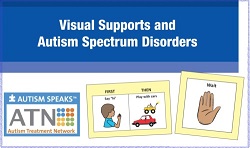
For more information and examples, see the Autism Speaks ATN/AIR-P tool kit “Visual Supports and Autism Spectrum Disorder.” Follow the link for free download.
Reinforcement/Rewards
We all respond to reinforcing rewards. In the early stages of introducing a new safety skill, the parent or teacher should plan to provide many small rewards for each small step in the right direction. These can include reward tokens, a favorite snack or even a small toy. It’s important to reward the child in the moment. Even an attempt should be freely rewarded. For older children, tokens can be collected toward a larger prize.
Practice
Like any new skill, safety behaviors require a lot of practice in a variety of situations. In the beginning, we recommend practicing these skills in the safety of the home and backyard. After success in this setting, it’s time to move the skill out into the community.

When beginning to practice these safety skills outside the home, we suggest starting in an empty parking lot or on a quiet street before moving to a busier environment. Safety is crucial as this exercise moves outdoors. So we recommend having at least two adults at hand each time the skill is practiced in a new outside setting. This allows the child to practice the skill with one adult while the other maintains safety at all times.
It’s wonderful that, as an educator, you’re reaching out to help this family in need. For more information and resources, we recommend the “Autism Speaks School-Community Tool Kit.” (Follow the title link for free download.) If additional questions come up, we hope you will contact us again by emailing us as GotQuestions@AutismSpeaks.org.

